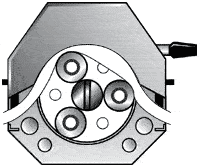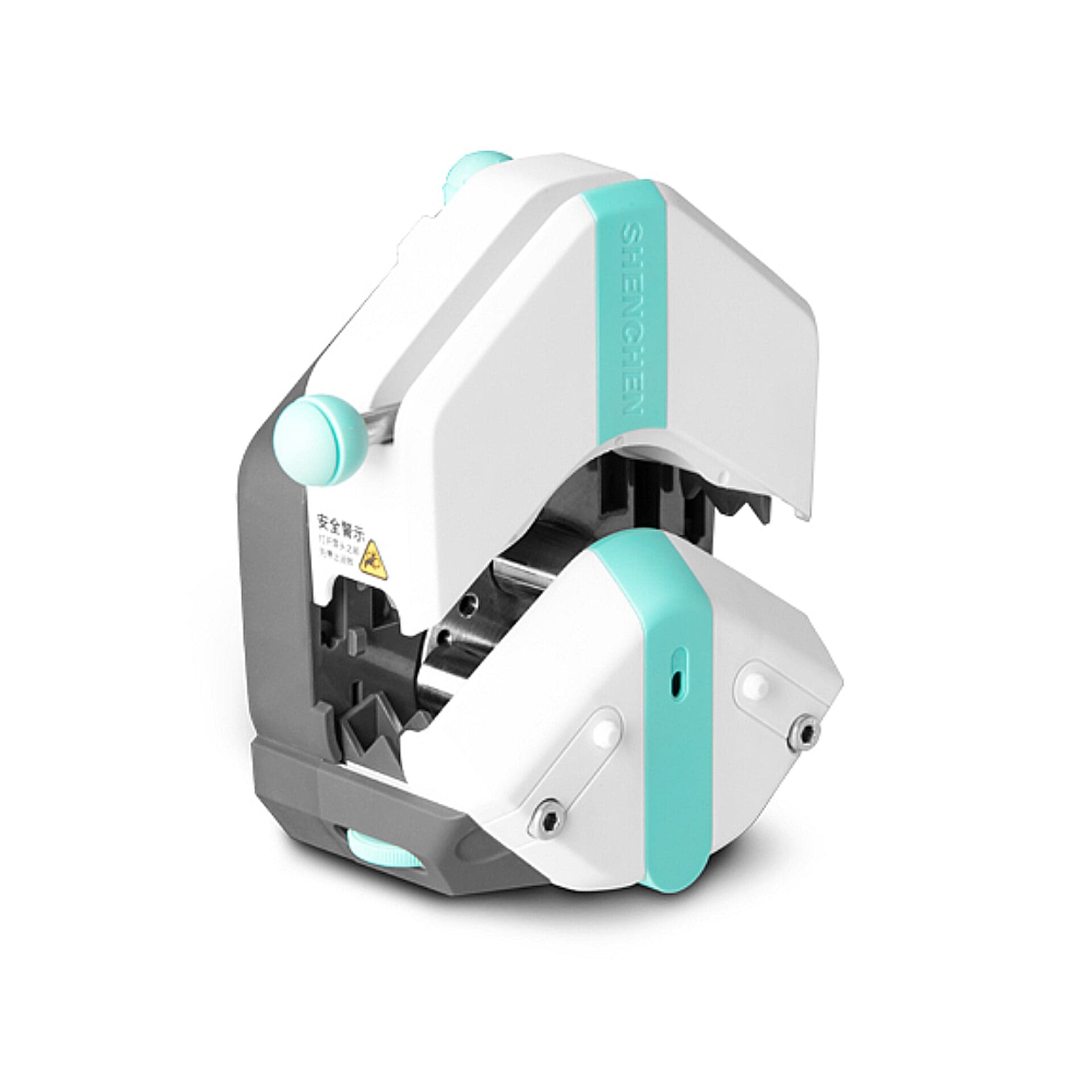When choosing a peristaltic pump, selecting the right pump head means understanding the impact of roller count on performance. Pump heads come in various configurations, with 2, 3, 4, 6, 8, 10, or even 12 rollers—each affecting flow characteristics, pulsation, and tubing lifespan differently. Whether you’re considering a pump with fewer rollers for a budget-friendly, low-flow application or more rollers for smoother, high-flow performance, each choice offers its own set of advantages and trade-offs.
In this article, we’ll explore how roller count affects your pump’s efficiency and durability, and provide guidance on selecting the right configuration for your specific needs.
How a Peristaltic Pump Works: Quick Overview
A peristaltic pump is a type of positive displacement pump that moves fluids through a flexible tube using rotating rollers. These rollers compress the tubing in a sequential motion, pushing the liquid forward while preventing backflow. Since the fluid never comes into direct contact with the pump mechanism, peristaltic pumps are ideal for applications requiring sterility or handling sensitive fluids.
An essential part of the peristaltic pump is the pump head, which houses the rollers responsible for squeezing the tubing. The number of rollers determines how frequently the tube is compressed, directly influencing the pump’s performance in terms of flow rate, pulsation, and tubing wear.
With this basic understanding, we can now examine how roller count influences key performance factors.

The Impact of Roller Count on Pump Performance
The number of rollers in a peristaltic pump head is a key factor that influences the pump’s overall performance. Whether you need consistent flow rates, smoother operation, or extended tubing life, roller count plays a crucial role in each of these factors. This section explores how roller counts influences key performance factors like flow, pulsation, and tubing wear.
Pulsation
One of the most noticeable effects of roller count is pulsation—the rhythmic variation in flow as the rollers compress and release the tubing. Pumps with more rollers generate a smoother, more continuous flow because the tubing is compressed at more frequent intervals, reducing fluctuations.
Conversely, pumps with fewer rollers create a more pronounced pulsation because there are longer gaps between compressions. This results in a "pulsed" or intermittent flow, which may not be suitable for applications that demand steady and accurate fluid distribution. However, in some cases, pulsation may not be a drawback—certain mixing or transfer processes can tolerate or even benefit from it.
The choice between higher and lower roller counts depends on the sensitivity of the application to flow irregularities. If minimal pulsation is critical, opting for a pump head with more rollers is the better choice.
Tubing Wear
Roller count also impacts tubing wear and overall tubing lifespan. More rollers distribute pressure more evenly across the tubing, reducing localized stress and extending the tubing’s durability. Since each section of the tubing experiences less compression per roller pass, wear is spread out over a larger area, slowing down material fatigue.
On the other hand, pumps with fewer rollers apply greater force to specific points on the tubing for longer periods between compressions. This concentrated stress accelerates wear in those areas, leading to faster deterioration and an increased need for tubing replacements. In high-pressure applications or when using more delicate tubing materials, a higher roller count can help minimize the risk of premature failure.
💡 Tubing life also depends on factors like tubing material, pump speed, and fluid characteristics. While more rollers generally contribute to longer-lasting tubing, selecting the right tubing material for the intended application is just as crucial for maximizing performance and durability.
Handling Viscous Fluids
The roller count in a peristaltic pump also influences how well it handles viscous fluids. Pumps with more rollers, such as 8, 10, or 12, provide more frequent compression points, which helps move thick or sticky fluids more smoothly. The increased number of rollers ensures continuous contact with the tubing, maintaining a steady flow and preventing fluid from settling or creating resistance within the tube.
Conversely, pumps with fewer rollers may struggle with highly viscous fluids. The larger gaps between compression points can allow thicker fluids to settle between roller passes, leading to inconsistent flow, increased back pressure, and even blockages in extreme cases.
💡 For applications involving dense, high-viscosity liquids—such as gels, syrups, or slurries—choosing a pump with a higher roller count can ensure a more stable and controlled flow. However, the right tubing material and pump speed also play a crucial role in optimizing performance with viscous fluids.
💡 When to Choose Fewer Rollers?
Fewer rollers (e.g., 2, 3, or 4) are a good choice in applications where:
- Cost and Simplicity Matter – Lower roller count means a more affordable and mechanically simpler pump head.
- Low Flow is Sufficient – Ideal for minimal or intermittent flow requirements.
- Pulsation is Acceptable – Works well in applications where consistent, smooth flow isn’t a priority.
- Less Maintenance is Preferred – With fewer moving parts, these pump heads require less frequent servicing.
- Basic Fluid Transfer is Needed – Suitable for non-viscous fluids without special handling requirements.
💡 When to Choose More Rollers?
Pumps with more rollers (e.g., 6, 8, 10, or 12) are a good choice in applications where:
- Higher Flow & Smoother Operation are Required – More rollers ensure a smoother, high-flow performance with minimal pulsation.
- Consistent Fluid Delivery is Needed – Best for applications where a more consistent flow is important.
- Viscous Fluids Need Handling – Higher roller counts provide better compression, ensuring uniform flow for thicker liquids.
- Extended Tubing Life is a Priority – More rollers distribute wear more evenly, reducing stress on tubing.
Conclusion
The number of rollers in a peristaltic pump head plays a crucial role in determining flow rate, pulsation, tubing wear, and overall performance. Fewer rollers offer a cost-effective solution for low-flow applications, while more rollers provide smoother operation and better handling of viscous fluids. Choosing the right roller count depends on your specific needs, whether it’s minimizing pulsation, extending tubing life, or optimizing fluid transfer.
Stay tuned for more insights on peristaltic pumps, fluid handling, and efficiency tips🔄💧!
📧 If you have any questions or feedback, please feel free to contact us at contact@darwin-microfluidics.com.


